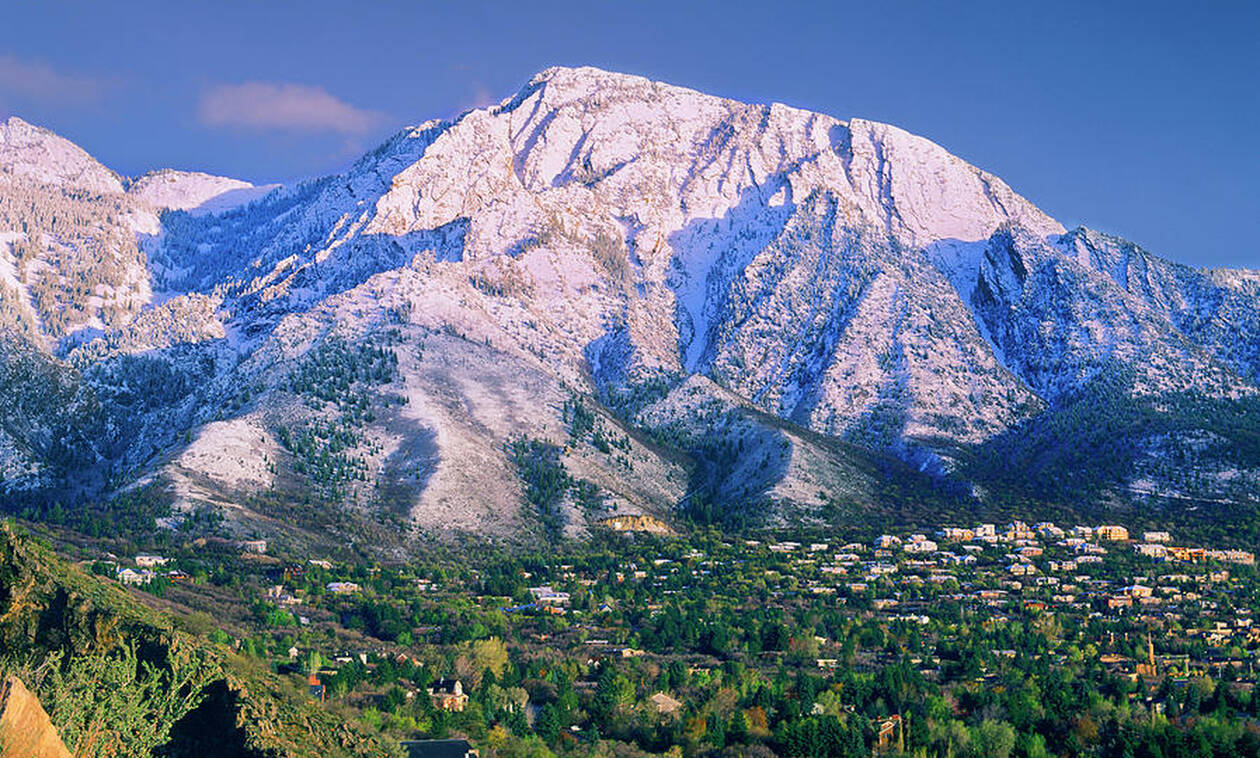Olympus is the highest mountain in Greece, known worldwide mainly for its mythological context, as at its top (Mytikas, altitude 2,917 meters) lived the Twelve “Olympian” Gods according to the religion of the ancient Greeks. It is also the second highest mountain in the Balkans after Rila in Bulgaria.
Its compact mountain range is located on the borders of Macedonia and Thessaly, with a series of high peaks that groove deep ravines, around which extends an area of great biodiversity. For the protection of the area, it was declared in 1938 as the first National Park of Greece, while later the Greek Ministry of Culture declared Olympus as an archeological and historical site due to its scattered monuments.
The shape of Olympus, the multifaceted and changeable charm of its nature, its high peaks, full of fog and low clouds that often bring storms, caused awe and admiration to the prehistoric man who lived at its foot, where the archeological dig reveals Iron Age settlements. These first inhabitants of the area will create the legends that will later attribute the Twelve Gods of the Ancient Greeks.
The twelve gods live in the gorges, “the aspects of Olympus” as Homer calls them – where their palaces are located. The Pantheon (today’s Mytikas), is the meeting point of them, the theater of their stormy discussions. The throne of Zeus (today’s Stefani), hosts exclusively the leader of the gods, Zeus (Zeus). From there he unleashes his lightning, thus showing the “Divine of the month”. The twelve gods are completed by Hera, Estia, Demeter, Poseidon, Athena, Apollo, Artemis, Hermes, Mars, Aphrodite and Hephaestus. Olympus in the Iliad is called great, long, glorious (ie. ), multi-tree.
On the eastern outskirts of Olympus, in Pieria, the mythological tradition placed the nine Muses, patrons of Fine Arts, daughters of Zeus and the Titanic Memorial: Klio, Efterpi, Thalia, Melpomene, Terpsichore, Polpsichore , Ourania and Kalliopi.
In general, the climate on Olympus can be characterized as Mediterranean with a continental effect. The local variations that are presented, are a result of the influence of the sea and the intense relief of the area. In the lower areas (Litochoro and foothills) the climate is typically Mediterranean, ie hot and dry in summer – wet and cold in winter. In the higher areas it is wetter and rougher, with more intense phenomena: in these areas it often snows all winter, while rain and snow are common phenomena in summer as well. Temperatures range from -10 ° C to 20 ° C in winter and generally from 0 ° C to 20 ° C in summer, with winds being an almost daily occurrence.
The highest zone of the mountain, above 2,000 m., Is covered by snow for about nine months (September – May). In some places the winds collect snow 8-10 meters thick (wind turbines), while in some deep ravines the snow is maintained throughout the year (eternal snow). For this alpine area of Olympus, measurements were made in the 1960s by the first mountain meteorological observatory in Greece, which operated at the top of Agios Antonios (2,815 m.), Providing a number of interesting data on the mountain climate. The average temperature is -5 ° C in winter and 10 ° C in summer.
During the summer months, rainfall is very frequent and usually manifests itself as afternoon thunderstorms, which are often accompanied by hail and strong winds. Nevertheless, water sources above 2,000 m are rare and visitors should make sure to always have water with them and of course the necessary clothing for any weather event.
Hiking trails
The path at the Laimos-Giosos pass (“Skourta” location).
Olympus is mentioned as the most popular mountain in Greece for hikers, climbers and climbers. Its impressive height, mythical charm and easy accessibility make it an attraction for thousands of visitors from all over the world. The roads and paths that cross the mountain mass, a network excellently maintained in the majority, gives the opportunity to the hiker and the visitor who has no special mountaineering interests or knowledge to get acquainted with Olympus, the varieties of flora and fauna and the its natural beauty. The main one is the European Trail E4 that moves west from Litochoro to the peaks, through the gorge of Enipeas. There is also the National Path O2, which connects the peaks to the south with Pelion.
In many places there are seating areas near springs and fountains that offer moments of relaxation and reflection to visitors. The Forest Service (Directorate of Forests of Pieria) has placed information signs in various places
Guests who have enough time at their disposal, ideally can go up to the top of the second route and go down from the first, spending the night in the shelters.
Mountaineering routes
For climbers, Olympus is a privileged place. There are organized routes and various shelters. The mountaineering routes to Olympus start from Litochoro, Dion and Petra. Summer ascents to Mount Olympus usually begin in early June and end in late September. It is the time when the shelters under the peaks are open and the weather allows a climb without the snow equipment and the mountaineering experience that winter requires. Climbing the high peaks during the winter season can only be done by experienced climbers, for whom there are also challenging routes by climbing the steep slopes. Novice visitors should be limited to the summer months, when the shelters are open as well.
The two main routes for exploring Olympus start from Litochoro and reach the tops of the mountain. The first follows the ravine of Enipeas and the visitor after about five hours of arduous hiking, after passing the Monastery of Agios Dionysios, reaches the place “Prionia” (altitude 1,100 m.), Where there used to be a wood sawmill and today there is a restaurant for food , source and car parking spaces. In the same place, in “Prionia”, one can reach alternatively by car after a route of 18 km (there is an outpost where information is provided about the national park, at its entrance). From “Prionia”, following the European Trail “E4” in about two and a half hours the climber reaches the peaks of Olympus.

.png)
.png)














